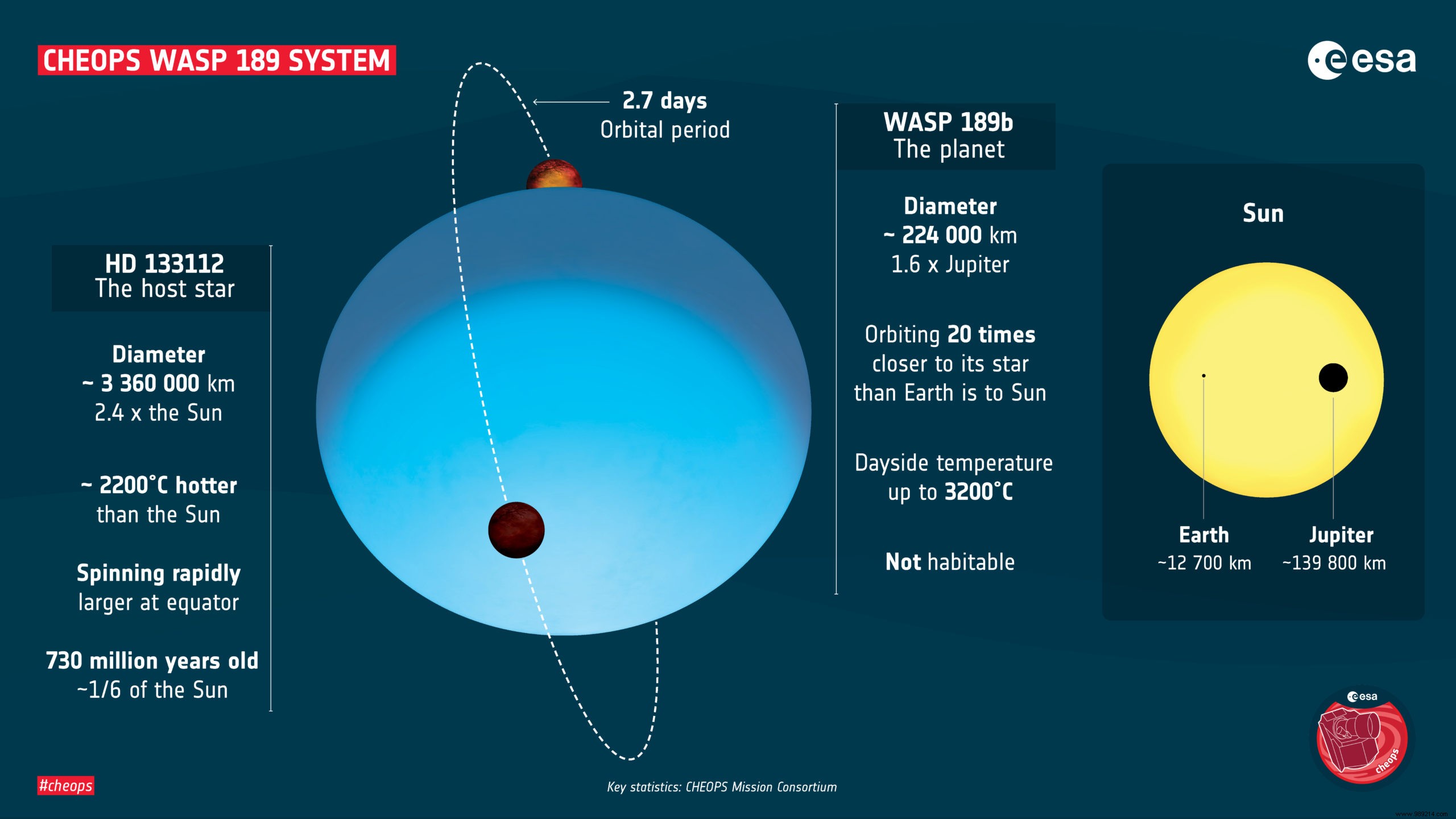The newly deployed CHEOPS space telescope recently focused on one of the most extreme planets ever isolated:an ultra-hot Jupiter known as WASP-189b.
Observatories like TESS and Kepler have led to the discovery of thousands of exoplanets in the Milky Way. What astronomers would like to do now is to study some of these worlds in more depth. In this spirit, ESA launched its CHEOPS (CHaracterising ExOPlanet Satellite) mission last December. ).
To carry out its mission, the satellite aims its objective at stars already known to harbor one or more exoplanets. By focusing on their tiny variations in luminosity, it allows researchers to characterize the properties of these worlds in orbit , specifying in particular their size and density, their orbital period or their surface temperature.
A little over a year and a half after its commissioning, the telescope has finally completed its first observations. The target is WASP-189b, a hot Jupiter discovered in 2018 by the WASP-South ground telescope in South Africa. As a reminder, the "hot Jupiters" are exoplanets often exceeding the mass of Jupiter, but orbiting very close to their star .

WASP-189b is located 322 light years away of Earth in the constellation of Libra (southern hemisphere). The planet evolves within 7.5 million kilometers of its star, a blue giant named HD 133112, and circles it every 2.7 days .
Such proximity is obviously not without consequences:WASP-189b, which shows only one side of its star, is indeed very hot. According to CHEOPS data, its surface temperature is estimated at around 3,200°C! "WASP-189b is one of the hottest gas giants in existence “, confirms Monika Lendl, from the University of Geneva and lead author of the study.
For comparison, our Sun is only 2000°C warmer than this burning exoplanet. In fact, WASP-189b even displays a higher surface temperature than some red dwarf stars. In other words, the potential for life on this planet is basically nil. Under these conditions, even iron would turn into gas.
The researchers also refined the mass of the exoplanet, finding that it is almost twice as heavy as Jupiter. They also updated its diameter,224,000 km , which is slightly larger than previous calculations suggested.

Interestingly, WASP-189b is in an inclined orbit, which means it is not aligned with the equatorial plane of its star. For the researchers, this means that the exoplanet probably formed further, before migrating slowly inwards . The researchers speculate that the closeness could be explained by the gravitational influence of other planets present in the same system or by the influence of a second star.
Finally, the researchers noticed that the star, HD 133112, is not perfectly round. It is in fact a little flattened, bulging at the equator where the temperatures are cooler than in the polar regions. The authors of the study explain that the fact that it turns very quickly on itself explains this strange shape.